The cultivation of the tube in the garden is perplexed by people who have heard about the failure of the nature of the plant at home. But the gardeners are ready to argue: terraces, balconies and flower beds can be abundantly decorated with quadric flowers - there would be a desire. Care for this culture consists of a variety of nuances, nevertheless, Begonia remains a universal favorite, regardless of where it grows, houses in a pot or garden flower bed.
Begonia is tuberous - the fruit of a hybrid combination of "parents" of 9 different species. We know her as an ampel, grassy or bush plant. The painstaking work of breeders of the largest European countries gave positive results: Modern Begonia is stronger and more sturdy than its raised predecessors, so today a decorative plant is experiencing a new round of popularity in gardening and gardening the most visited places on the planet.
Begonia Tube: how to buy a suitable tuber
In search of a plant, give up the babble in large shopping centers, better pay attention to thematic departments and gardeners. As a rule, ripening tubers from Holland appear on sale in the last days of winter. Sometimes they are packaged several pieces in packets with peat mixture or wood chips, but most often they are delivered to the strokes.
Never wait for favorable stocks or price reduction - in this case, you will fall on the poor remnants, which are hardly destined. When buying, focus your attention directly on the planting material. The tuber is definitely not suitable for landing if he:
- soft to the touch, deprived of the turgora;
- it looks too dry;
- has damaged upper fabrics;
- covered with layer of plaque or mold spots.
The choice is complicated if the tubers are packaged in packages of 2 - 3 pieces. In addition, instances of one package can differ significantly from each other in quality characteristics. Try to find packaging with large, dense and beautiful tubers. A good sign - the presence on the planting material of the kidneys.
To deliver Begonia's clubs home safely, flop by their newspapers. Transportation of gentle bulbs without additional shelter in a minus temperature can cost them their lives.
Begonia Strevy: Types of Plants
Scientific experts classified this tuber culture for 4 types:
- large-flowered;
- small-bedal;
- mednical;
- ampel.
The main difference between these species is the size of a tuber, coloring, in the structure of the flower (terry / non-nominal form) and the external edge of its petals (corrugated / gear). Some types of begonias have amazing external similarities with peonies, daffissions, roses and camellias.
Begonia Tongs: Plants
Each gardener is undoubtedly the most favorite breeding variety of tube. All popular varieties of plants are so beautiful that they are in the soul at first sight:
- Golden ball - a conquered bush, which during flowering period decorates outfit from large yellow colors;
- Chanson - a long-term begonia of a tuberous ampel-suicide, covered with miniature terry flowers;
- Kelblyutrott - a begonia of a large-flowered view with beautiful red flowers;
- Orange - fragrant beauty with excellent terry flowers in the form of lush corrugated bells;
- Picotics - Begonia with large terry inflorescences of pink, white or yellow-rose colors;
- Marmorate is perhaps the most famous begonia variety. Notable for huge air-colored air flowers with red strokes and bright red border along the edges of petals.
Begonia Tube: planting pot
Tubers Plants are usually reserved at the end of winter, when the open soil has not yet quickly warmed up so that it was possible to play begonias. Therefore, in anticipation of stable warm weather, tubers leave in a cool room or put in a fridge to the shelf for vegetables. If the kidneys on the planting material still sleep, in such conditions it is stored until March. However, if the tuber has already tried to grow, it is impossible to leave it in the package. Then the begonia is planted in a pot, filled with a mixture of loose nutrient soil and vermiculite, where it will build roots.
Substrate for landing can be taken ready or prepare it at home: need sheet, humus, peat ground and sand in a 2: 1: 1: 1 proportion. In the seal, such a mixture does not need. Before boarding, all tubers pass a special processing: at first, dry roots are removed from them, and then soaked 20 to 40 minutes in a fungicidal solution prepared according to the instructions. In the antiseptic liquid, the tuber is immersed on 2/3, so that the top remains dry.
Begonia Cloth Potted Potted Pot is not too deep because the roots are surface roots. If the sizes of the seating box are allowed, several pieces of tubers are planted at once, while maintaining a distance of 10 cm between them. Keeping copies are then cleared. For a single landing, a wide, but low container is suitable. The gap from the tuber to the wall pot must be at least 5 cm.
At the bottom of the pot be sure to put drainage. If there was no broken brick or clay shards at hand, the purchased clay is suitable. Sit the tuber with a convex side down. Begonia is readily responding to feeding, so fertilizer in the soil can be made immediately after landing.
Watering the future begonia - moderate and cautious. The kidney is formed on the concave part of the tuber, so the top of the plant should always remain dry. The tuber is watered along the edge of the pot as the upper part of the substrate will be filled. Hold the tuber under a package or a bottle, as some flower plays advise, do not, otherwise, such greenhouses will prevent a graceful plant to adapt in open soil. The tank with begonia is exhibited on a windowsill with scattered sunlight. Optimal temperature for germing within +16 - 17 ◦C. The premises regularly ventilate and protect the pots with tubers from drafts.
Begonia Tube: landing in open ground
To introduce a plant with a street environment, soon after landing in a pot, it is possible to periodically put it on a warm balcony or terrace, gradually increasing the "Walking" interval.
Begonia seedling transfers to open soil comes when the threat of sudden frosts passes. The most important part of the planting process is to choose a suitable place for begonias. The plot should be light, protected from wind and direct sunlight. Openwork shadow of plants standing above will save begonia from sunburn. How to plant a tube begonia if there are several plants instances? Consider that the landing distance between them depends on the size of Begonias. Thus, large bushes are well adjacent to 30 cm from each other, for medium plants this gap is reduced to 20 cm, and the "kids" will be seated at a distance with an interval of 15 cm.
Check in advance that the soil of the selected area will satisfy begonia requests. Loose soil should be easily drinking with oxygen. The bottom of the landing pits fall asleep by humus and the ashes, the same mixture mulch the surface of the earth after planting the plant.
Begoniaball Begonia: Care
After the landing, the most important part of the plant care program becomes abundant watering - 1 time in 3 days. It is best to water begonia in the morning clock. You need to handle bushes carefully: the shoots of the flower are very tender and brittle. Begonia feels badly in arid weather - on such days, the frequency of watering can be increased. Begonia bushes do not spray - the likelihood of a serious sunburn is great. Always pay attention to how quickly the soil absorbs water, because Begonia's fluid is simply not survived. If necessary, the plot is equipped with an additional drainage system. Do not forget about regular soil looser.
Begonia is covered with buds and flowers at the end of May. Beautiful and usually abundant flowering is preserved until mid-October. Most flowers converge in the opinion that the most impressive spectacle represent the terry forms of begonias, which in color resemble a lush live bouquet. Fastened flowers are in a timely manner, so that all the forces of the plant go to the formation of new buds. Flowers have begonia men and female. If there is no need for seeds, men's flowers are inconspicuous and not very large - you can turn immediately.
Program feeder for all begonia varieties. The optimal solution is a universal mixture for flowering plants. Take into account that the quality of flowering may noticeably suffer if breeding with rigid water. To mitigate water, vinegar is used in the proportion of 1 tbsp. l. on 15 liters of water. Young bushes require additional mineral feeding on the basis of phosphorus and potassium. You can lay out peat and compost on flower beds.
Begonia Tube: rest period
With the arrival of autumn, watering begonias reduce and cancel fertilizer - the plant is time to prepare for rest. Soon the above-ground part of the bush will begin to die. When there are almost no leaves on the branches, watering is stopped at all. Further preparation of Begonias to the rest period looks like this:
- The above-ground part of the plant is removed, leaving the pencils of no more than 3 cm in height.
- Tubers dig in 2 weeks and leave in a dry room for drying.
- When the tubers are dried, they are purified from the ground and lay in one layer in a container with peat or moss-sphagnum, which is a reliable obstacle to rot.
- Capacity with tubers put for storage in a basement or refrigerator.
- Periodically, tubers inspect to detect and remove damaged on time.
Young bushes of begonbias, grown from seeds, in the beginning of autumn remain green. Without waiting for frosts, they are digging them so that the roots remain the earth com, they are grouping in size and fold into containers height up to 15 cm, and then sprinkled with the substrate. For the winter, the containers leave in a light and cool place (+15 ◦C) and periodically slightly moisturize so that the earthen comes do not dry.
In the spring, the awakened bushes are placed first in the pots, and when the time comes to plant a begonia of the tuber, transplant to a permanent place in the garden.
Begoniaball Begonia: reproduction
New copies are obtained from the plant by dividing the tuber, seeds and cuttings.
The division of the tuber uses mainly when it is necessary to rejuvenate 2 - 3-year-old plants. To do this, choose a large dense tuber with several kidneys and cut into a sharp knife into several parts. The sections are treated with a powder of the coal and planted these pieces into the ground. Care for decenes as well as ordinary tubers.
The reproduction of the begonia of tuberous cuttings is considered a rather laborious process. Material for reproduction is collected in spring or autumn. Strong and healthy shoots need to unscrew from the tuber and sprinkle "wound" with crowded coal. When the cut will dry, the cuttings are rooted in the ground or special pills from peat and placed in greenhouse. The roots will appear on average after 3 weeks. After successful rooting, the plant transplanted into the ordinary pot and take care of the indoor flower.
The easiest way to reproduce the tube sowing seeds. Seeds in the plant are very small and to protect them are covered with a special shell, which dissolves in water. In this form, the landing material is sold in stores. If you have collected seeds yourself, connect them to convenience with some fine-grained sand. Sowing from January to February, then the plants will bloom in the summer and already by autumn will acquire the tuber.
In the planting capacity with drainage holes, clamzit consisting of small fractions is poured, and the soil is poured top with a non-concentrated solution of potassium mangartage. Seeds are sown from above on the ground, not falling asleep the earth. Capacity left in teplichke as the optimum temperature for good germination is 23 - 27 ◦C. When the seeds are good, shoots are slightly irrigated from the sprayer so that the soil does not dry. After 2 weeks teplichku already be ventilated. Picks performed when seedlings acquire a first pair of true leaves.
Begonia tuber: pests and diseases
Garden beautiful begonia - a tasty morsel for pests. Very often suffer from plants, if grown under greenhouse conditions. The greatest danger for delicate bushes are nematodes, thrips, hothouse aphids, whiteflies and Quadraspidiotus perniciosus. Prevent insect infestation culture helps treatment plants special system means strict compliance with the dosage indicated by the manufacturer.
The most common causes of diseases of the Begonian diseases are the wrong care, extremes in watering, unsuitable soil. If at least one factor is present, Begonia may suffer from pulse dew, gray rot, bacterial and ring spot.
To save the plant, treatment is carried out to destroy fungal microorganisms that provoke the development of diseases. For this, the bushes of begonia are treated with special fungicidal means of the type of Fundazola and Topaz, borobo liquid and a solution of copper sulphate.
Begonia Bulk: Place in the garden and a combination with other cultures
Some flower products are categorically against the cultivation of begonias in the open soil - very gentle and naughty home flower. Nevertheless, the begonia is often used in modern landscape design of gardens and parks. Compositions in which there are vases with blooming begonia are particularly original - thanks to this design, lawns and flowerbeds are becoming more interesting and brighter. Garden areas decorated by begonia, retain a highly decorative appearance to the most frosts. See how organically fits the begonia of the tube in the overall picture of the garden in the photo:
In the garden, Begonia, the tube feels great in the company of decorative and deciduous cultures and border sections: Surfinia, Iberis, Lobulia, Lobelia.
Now you have an idea how the tender begonia is growing and blooms in the garden. Wintering, planting and care of the culture, of course, require some effort and time, but for devotees of decorative plants, these hassle become a pleasant time.

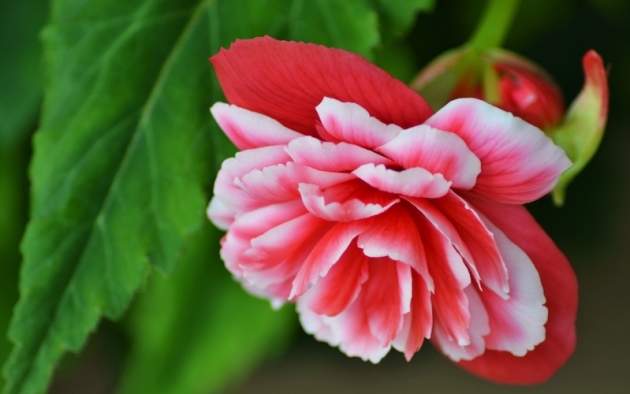
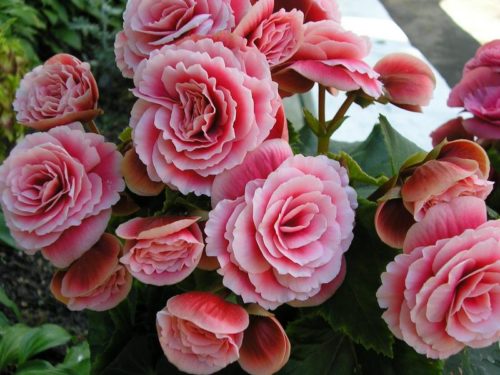
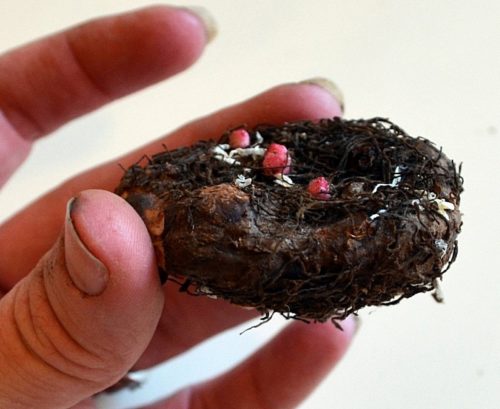
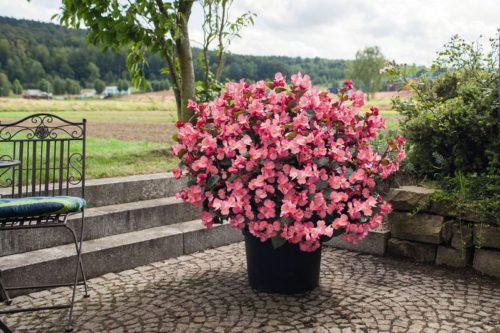

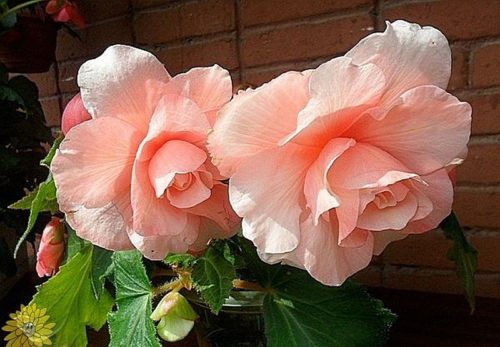
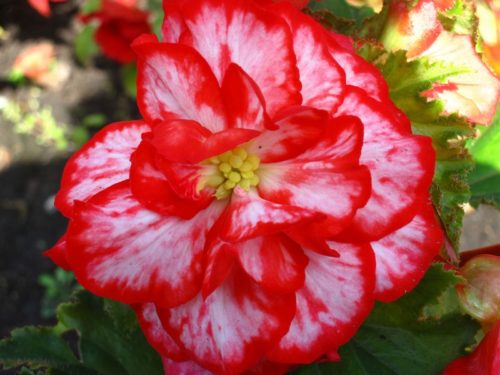
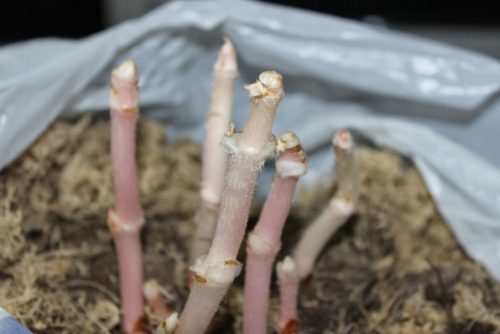
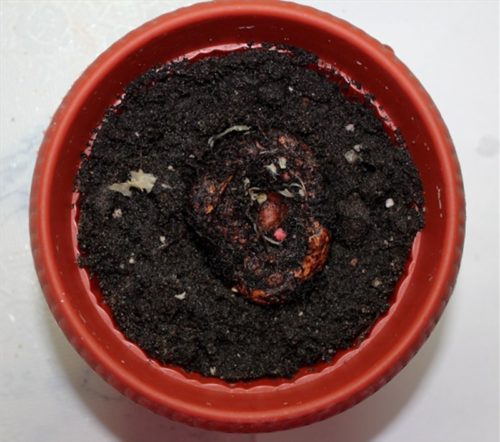
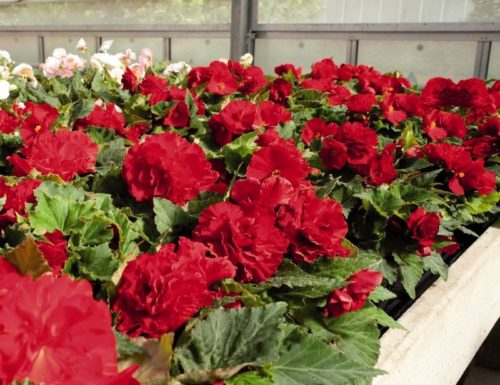
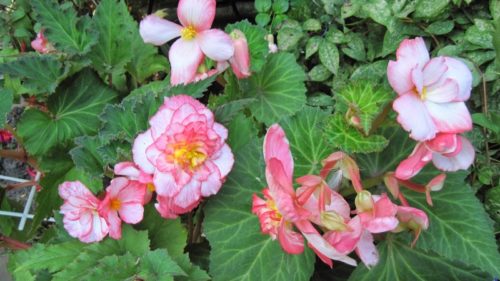
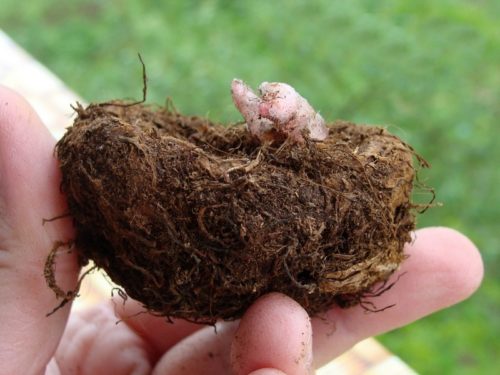
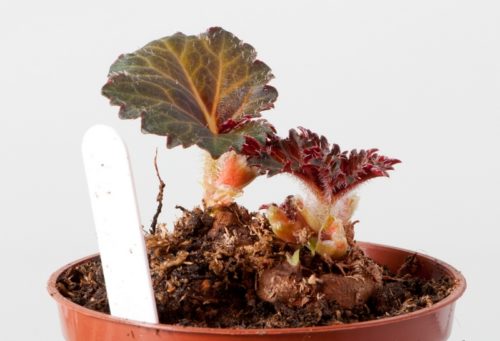
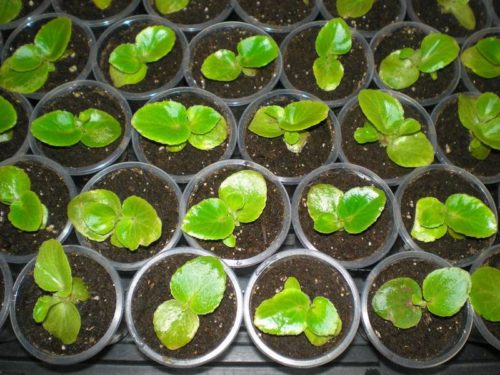
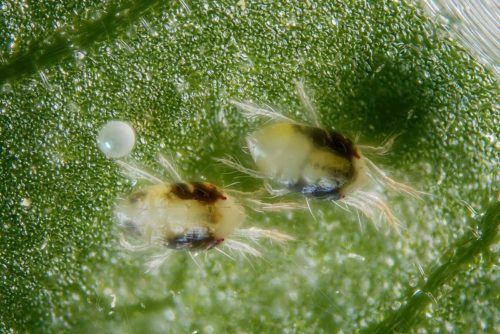
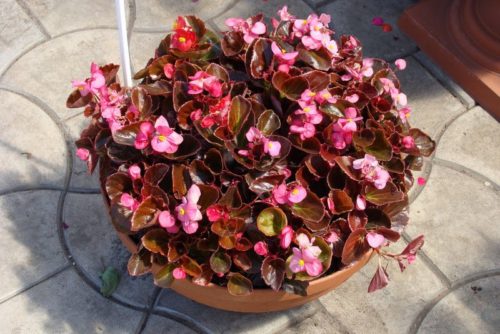
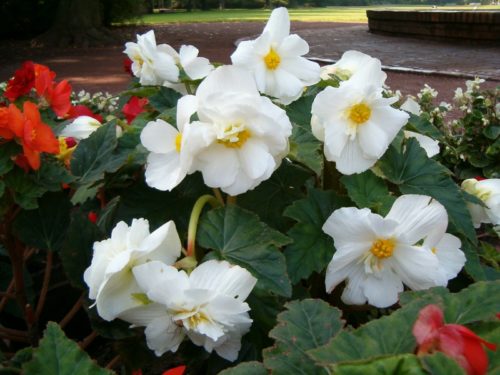
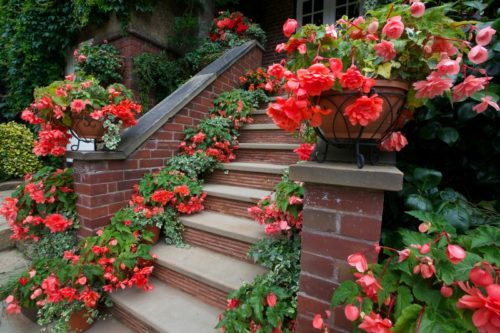
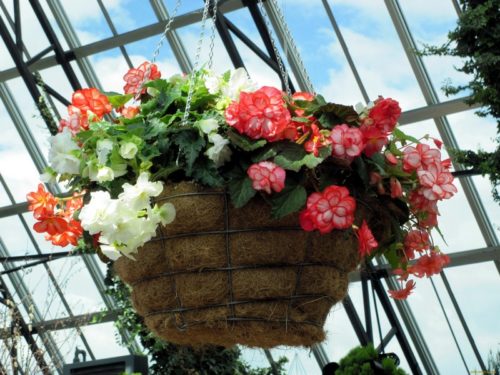
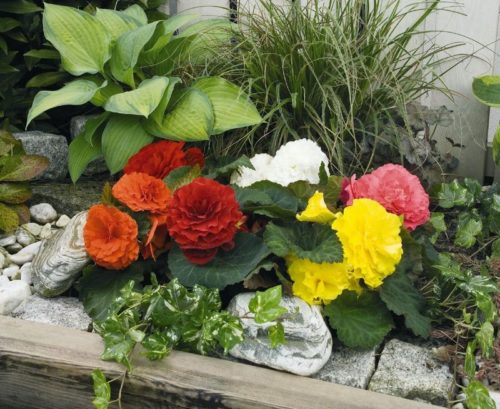












 Start a discussion ...
Start a discussion ...